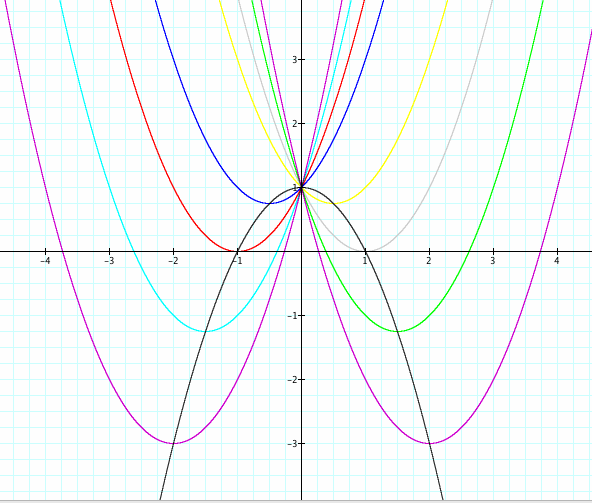
Exploration of Quadratic Equations
By
Moni Olubuyide
Let us investigate the equation:

for various values of a, b, and c...
Let's start with keeping a and c constant at 1 with various values for b.
 +
+
Notice that all the parabola have a y-intercept at (0, 1). This is because when x=0, y = c...therefore the y-intercept will always be (0, c)
Now when b < 0, we observe that the vertex of the parabola lie on the right side of the y-axis and when b=0 (the green graph) the vertex is on the y-axis. When b = -1 we have no real roots because it does not cross the x-axis. When b= -2, we have one root, and the graph intercepts the x-axis at one point. When b < -2 the graph intercepts the x-axis twice which corresponds to the two roots.
 +
+
Now when b > 0, all the vertex of the parabolas lie on the left side of the y-axis. When b= 1 then there are no real roots, when b= 2 there is one root, and when b >2 there are two roots. Therefore we can generalize that when b = 1, the graph will intercept the x-axis once. When -2 > b or b> 2 the parabola will intercept the x-axis twice. Lastly when -1 < b < 1, the parabola will not intersect the x-axis....


Observe the generalization...
Here is the locus of the vertices of the parabolas (the black graph)...notice that the locus is also a parabola

Given a general equation you can observe how parabola moves along the equation of the locus...
The equation of the locus is represented by ![]()
![]()
![]()

Click here to animate the locus of the vertices..